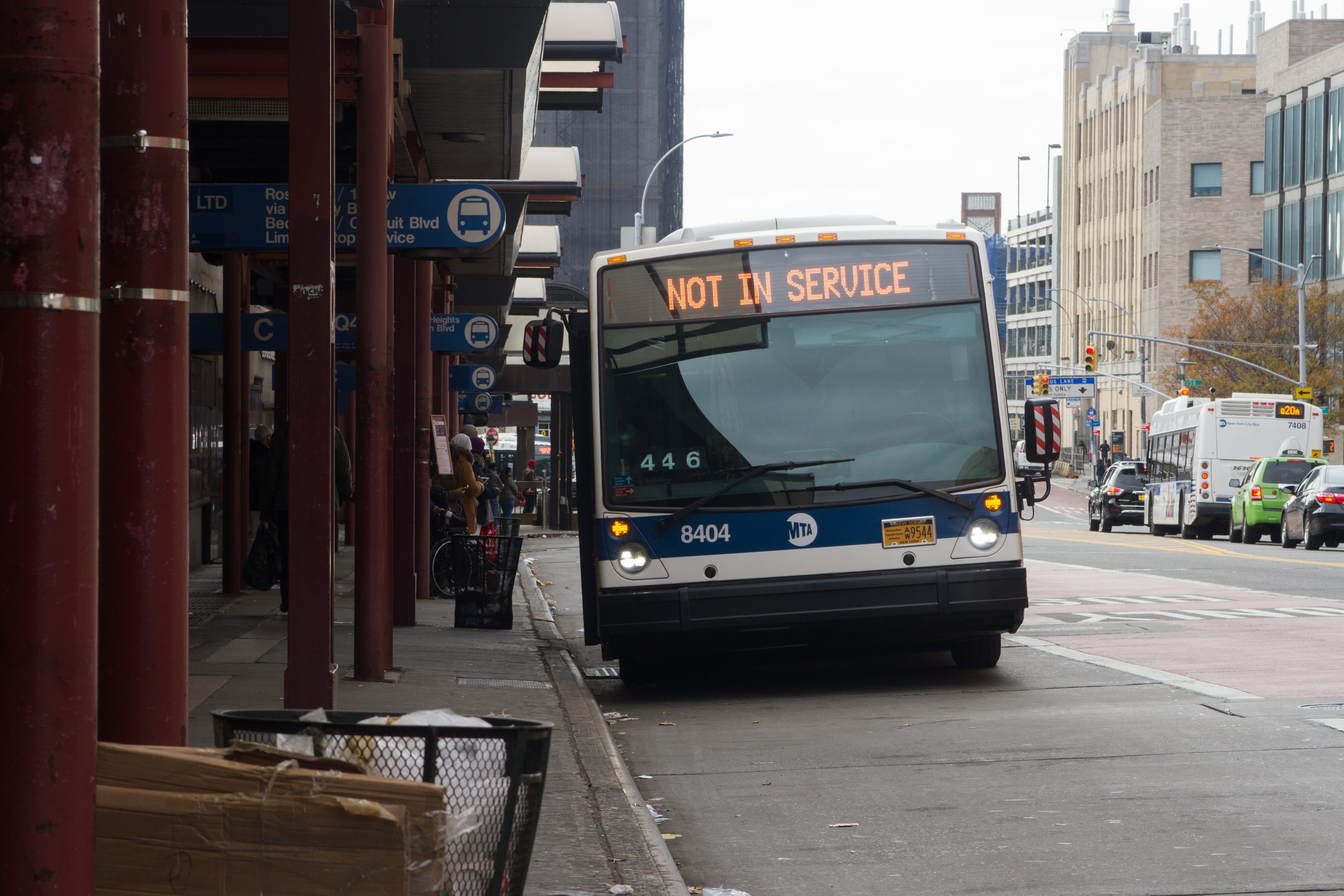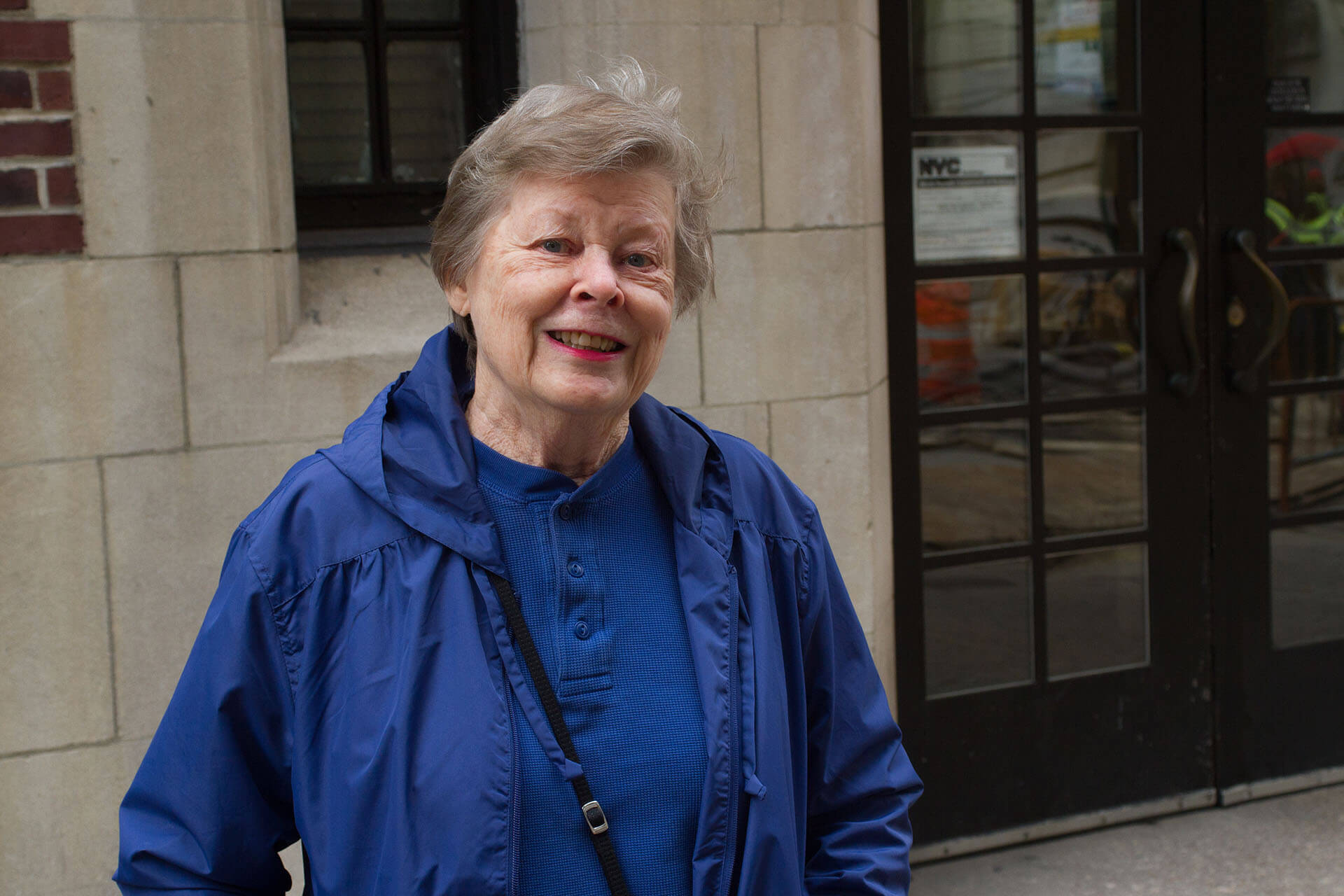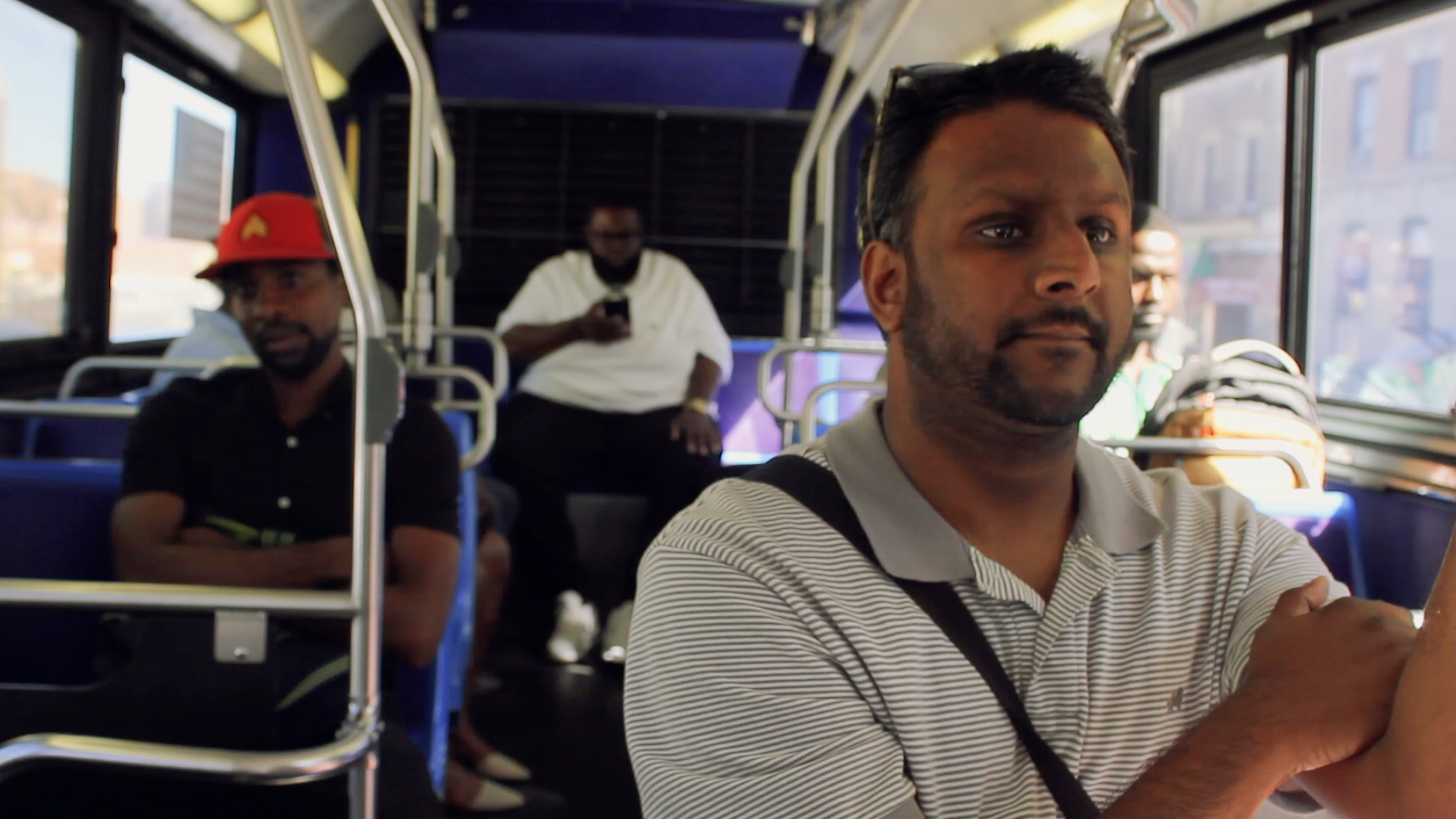
Every weekday, New Yorkers take more than 2 million rides on the city’s buses.

But today, buses in New York City are slow, unreliable, and getting worse.
As a result, New Yorkers are voting with their MetroCards: they are steadily abandoning the bus. Between 2002 and 2017, bus ridership dropped nearly 21%.

New York City’s buses are in crisis.
not only because New Yorkers who give up on the bus may travel in single-occupancy cars instead, but also because low ridership can cause a destructive spiral in which bus service is slashed as riders choose to avoid it. Unreliable bus service is hurting New Yorkers. As travel times become increasingly long and unreliable, bus riders lose time and money. Poor service can make them late to work and school and force them to spend money on cabs.
But our buses can be fixed—other cities have done it.
It’s time for a turnaround. Fast, reliable buses are possible in NYC. Other dense cities have turned around their ailing bus systems and we can too! Using best practices from around the country and the world, we have developed practical strategies for fixing New York’s buses.
Turnaround: Fixing New York City’s Buses is presented by the Bus Turnaround Coalition, a diverse group of New Yorkers determined to turn around the poor service that plagues the city’s bus system and the more than 2 million rides taken on it every weekday.

Meet Beth
Beth is a retired high school English teacher who is originally from Texas. She moved here in the 1980s because of a lifelong desire to live in NYC and for the freedom public transportation gave her. Beth lives on the Upper East Side, near the Queensboro Bridge. She is an active swimmer who practices three times a week to strengthen her bad knees and is also heavily involved in her church community on the Upper West Side. She got involved in the Bus Turnaround campaign out of frustration over inaccurate bus schedules and the poor and inaccurate information provided to riders.

“I‘m a retiree. Whatever time I may have left shouldn’t be spent waiting for the bus.”
As a resident of the Upper East side, Beth relies on buses like the M57 to get across town. She often has to wait a long time for the bus, typically without a shelter or place to sit. Once the bus does arrive, she then faces the frustration of a slow ride stuck in mixed traffic with single occupancy vehicles.
M57


Non-existent or unreliable bus countdown clock information
Bus is very slow: 4 mph
Bus is unreliable
Meet John
John is a father of three who works and lives in the Bronx. He is a librarian at the Van Cortlandt branch of the New York Public Library. He uses multiple buses, most often the Bx17 and Bx1 to take his kids to school and go to work. John got involved in Bus Turnaround out of frustration over poor service that continues to deteriorate while fares continue to increase. Bus service is so unreliable that John often ends up walking over a mile with his children when his bus does not arrive.

“New York needs a bus system that beats like the heart of the city.”
As a father with three kids to get to school before he gets to work, John gets up at 6:00AM. His first journey of the day begins on the Bx17 to take his children to school. After that, he takes the Bx1 along the Grand Concourse to get to work. Long wait times and unreliable service mean that John builds a lot of buffer time into his morning to ensure that he and his kids get to work and school on time. John typically spends over an hour and half traveling on slow buses each morning. He repeats this routine at the end of each weekday.
Bx17


Bus is highly unreliable and as a result, actual service is often less frequent than what the schedule indicates.
Bus is very slow.
Meet Natasha
Natasha is a small business owner from Eastern Queens. Her main bus route is the Q83, which she takes to get to the subway to reach Manhattan. Natasha grew up in the St Albans neighborhood and has depended on buses her entire life. Since the bus is slow and unreliable, she sometimes takes taxis to or from the Long Island Railroad station or dollar vans to get to and from the subway. Natasha got involved in the Bus Turnaround Campaign out of frustration over having to spend extra money when the bus doesn’t come. She’s tired of using resources that she could be investing in her business to compensate for undependable buses.
“Within the last decade bus service has seriously declined, making a significant difference in the amount of time I spend commuting and my overall peace of mind.”
To return home from work in the city at the end of her workday, Natasha takes the E train to Jamaica Center, a ride that often takes more than an hour. She then waits 20 minutes for the Q83, the only bus she can take to reach her home. When the bus arrives, it is usually already crowded. She and dozens of bus riders squeeze their way into the bus, making boarding uncomfortable and slow. The bus moves slowly out of Jamaica, and takes 25 minutes to travel 2 miles to her home. In total, it takes Natasha 2 hours to get home after a long day.
Q83


The bus is often late, which can mean a long wait at the bus stop. When the bus finally arrives, it is often very crowded.
Boarding the bus can be slow, especially when many people are waiting at transfer points in Jamaica
The bus often gets stuck in traffic, especially at the transit hub in Jamaica, and becomes bunched